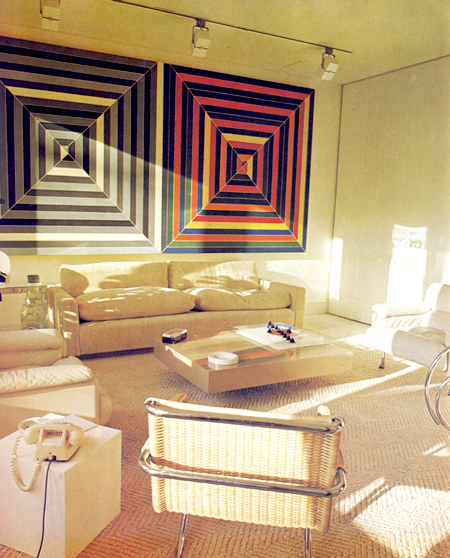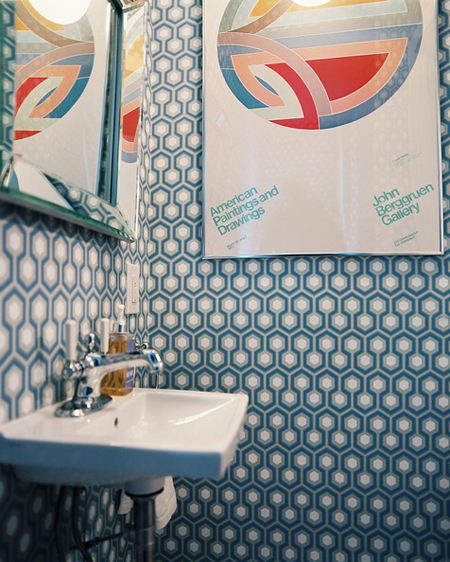
"What you see is what you see." ~ Frank Stella
You've probably seen his iconic intertwining geometric shapes before, but didn't know who he was. Meet Frank Stella, mid-century minimalist American painter and printmaker who paved the way for Pop Art through the flattening of objects with the use of solid color, and the denial of space and depth illusion with the removal of the brushstroke.
Originally hailing from Massachusetts, Stella moved to New York City in 1958 after graduating from Princeton, and quickly began to produce works that focused on graphic as subject, rather than a representation of some real-world object, person or scene.



After a visit to the Middle East in the early 1960's, he created his groundbreaking paintings Protractor Series (above), each piece named for one of the circular cities he visited while abroad. Here he fully celebrates the painting as a flat surface, turning away from even a slight attempt at spatial illusion. In the mid-1960's, Stella began experimenting with printmaking, introducing new techniques to produce his pieces. In 1973, he had a print shop installed in his home in New York City.
I'm a huge fan, and always adore seeing his work in various interiors -- they enliven a space and can easily become the central focus of a room:










Frank Stella became the youngest artist to be the subject of a retrospective at the Museum of Modern Art in 1970. He went on to experiment with relief, collage, and finally three-dimensional art forms, particularly free-standing sculptures in public spaces by the 1990's...and he continues to work in New York City. But it is his work done in the 1960's and 70's that defined him as a leader of the minimialist movement. In 2009, he was awarded the National Medal of Arts by President Barack Obama.
A living legend, literally.
Are you a fan too?

Images: 1 / 2 / 3 / 4 / 5 / 6 / 7 / 8 / 9 / 10 / 11 / 12 / 13 / 14
0 comments:
Post a Comment